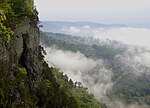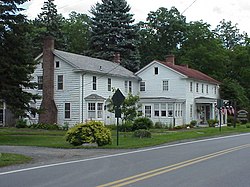Millbrook, New Jersey
Delaware Water Gap National Recreation AreaHardwick Township, New JerseyUnincorporated communities in New JerseyUnincorporated communities in Warren County, New JerseyUse American English from July 2023 ... and 1 more
Use mdy dates from July 2023

Millbrook, also known as Millbrook Village, is an unincorporated community located along Old Mine Road within Hardwick Township, formerly Pahaquarry Township, in Warren County, in the U.S. state of New Jersey. It is named after the Mill Brook, now known as Van Campens Mill Brook, a tributary of the Delaware River. The area is now part of the Delaware Water Gap National Recreation Area.
Excerpt from the Wikipedia article Millbrook, New Jersey (License: CC BY-SA 3.0, Authors, Images).Millbrook, New Jersey
Old Mine Road,
Geographical coordinates (GPS) Address Nearby Places Show on map
Geographical coordinates (GPS)
| Latitude | Longitude |
|---|---|
| N 41.073333333333 ° | E -74.963055555556 ° |
Address
Trauger Barn
Old Mine Road
07881
New Jersey, United States
Open on Google Maps







